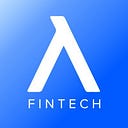Demystifying Blockchain Sharding
by Marvin Dumont
Got bloat?
It refers to data overload that could threaten a blockchain’s functionality, speed, and stability. That’s what is likely to happen after years of permanently storing info on a public ledger.
Bloat could result in lengthy synchronization times between a wallet and network, and it may impact transaction fees (making them more expensive).
This month, Apollo Foundation became one of the first cryptocurrencies that implemented sharding protocol, which aims to make blockchain sustainable.
Here are graphics that explain sharding.
Steve McCullah, director of business development, says:
With the release of sharding, APL becomes the world’s ultimate currency — the fastest and most feature-rich crypto, as well as, the most sustainable blockchain available. Through sharding and adaptive forging, APL is among the first cryptocurrencies to solve blockchain’s vital challenge of sustainability.
According to Sergey Rokhvarg, chief technology officer (CTO):
Sharding allows you to download the blockchain much faster, and it reduces the cycle-time of operations as well as lowers the needed disk space. Apollo sharding is a trailblazing innovation that is not implemented in most cryptocurrencies. Our developers anticipate potential issues in order to prevent them.
Sergey Rokhvarg, CTO, says:
An increasing number of transactions leads to a constant increase in the Apollo database. This process goes faster with shorter block time. Blockchain requires full access to the ledger from the beginning to current time to verify each transaction, but this task does not run every time. Most operations require lesser parts of an entire database.
On Mar. 28, John McAfee said on Twitter:
One of the biggest issues with current cryptos is blockchain bloat. Apollo is one of the only coins to solve this problem. Their release of Sharding will make it one of the most advanced coins on the market and one of the only options viable long term.
The first shard executed at block 2,250,000 on April 1. These took place:
- It split the ledger database into time-based (or blockchain height-based) segments. The split was made on each node in the consensus. (Each node “knows” when that split occurred.)
- Each shard completes every 750,000 blocks after 1,400 blocks of acknowledgment.
- Information is added to each shard/segment that allows blockchain operations to happen without queries to the full ledger database.
- This optimizes the blockchain processing code to use the last segment for most operations.
- Make each segment “trusted” by signing its summary tables.
- Make full blockchain downloading optional/delayed. Download the latest segment of the ledger and start processing.
- Download previous blockchain segments on demand.
- Download blockchain from last to first blocks.
Apollo (APL) all-in-one privacy currency combines features of mainstream cryptocurrencies in a truly private and unregulatable platform. With two-second block speed, APL is one of the fastest cryptos on Earth. The privacy platform lets “Apollonauts” transact and send data anonymously via Encrypted Messaging, Private Ledger, Decentralized Exchange, IP Masking 2.0 and Coin Mixing. Learn more at www.apollocurrency.com
